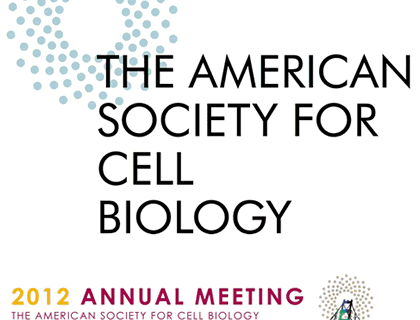
Innovative Products Featured at the ASCB Conference – Part I
ASCB San Francisco
I had the pleasure of blogging from the Annual Meeting of the American Society for Cell Biology (ASCB) in San Francisco last month. I always enjoy attending this conference and was fortunate to attend several interesting technology and product talks. I also toured the exhibit and poster hall to get a glimpse at the many innovative products being featured. For readers who could not attend the conference or missed wandering the exhibit and poster hall, I have included a brief description of some of the products that caught my eye this year. I have broken the summary into two parts and hope to follow up these brief descriptions with guest blogs to describe some of the products in more detail in the coming months.
GE Healthcare’s Annual Cell Imaging Competition
One display that was impossible to ignore was GE Healthcare’s beautiful cell images presented in high definition color as part of their annual cell imaging competition. Over 100 images were entered for the high-content analysis and high and super resolution microscopy categories. After an Expert Scientific Panel selected the top 15 images in each category, the public was able to vote on their favorites both at the conference and online. Unfortunately voting has now closed, but soon the image library will be open for viewing and the winners will be announced. Check back with their website if you are interested in seeing these amazing images, or if you have images of your own you would like to enter, the contest will be held again in 2013.
Corning, formerly BD, PureCoat ECM Mimetic Cultureware
I was able to attend a talk on Corning’s PureCoat ECM Mimetic Cultureware line. These cultureware products are coated with animal-free synthetic extracellular matrix-peptides that are derived from either Fibronectin or Collagen Type 1 sequences. The Fibronectin based surface contains the RGD amino acid sequence motif, that makes it a great surface for expanding mesenchymal stem cells (MSCs) or other alpha-5 integrin-positive cell types. The Collagen Type I based surface contains the GFOGER amino acid sequence motif and binds cells that attach via alpha-2 integrin, which makes this surface a good choice for the expansion of primary keratinocytes under serum or animal-free conditions. The fact that the Fibronectin and Collagen I Mimetic Surfaces support the expansion of MSCs (xeno-free) and primary keratinocytes (animal-free), respectively, makes these surfaces a better choice for pre-clinical or clinical research in stem and primary Cell Therapy applications. Please see our previous blog “Cultureware – A New Generation of Products Step Up to the Plate,” for more information.
Life Technologies’ Expi293 Transient Transfection System
Life Technologies has developed a next generation transient transfection system called Expi293 that combines specialized media, lipofectamine technology and molecular biology to increase protein yield using less culture volume. Expi293 is a complete system, easy to use and follows a similar format as their FreeStyle system. Comprised of specialized media that supports high density cell culture, a select population of HEK 293 cells that have been selected for higher per cell productivity, and a transfection reagent optimized to achieve high efficiency transfection in high density cultures, the system has demonstrated protein yield exceeding one gram per liter. Another benefit of the system is that it can be scaled down to microplate format or scaled up to multi-liter transfections depending on demand.
ORFLO’s Moxi Z OS 4.0
On one of my trips through the exhibit hall, I discovered the Moxi Z, an incredibly powerful handheld automated cell counter. It was hard to believe all this little machine could do as it sat lightly in the palm of my hand. It combines the Coulter Principle with a thin-film sensor technology to provide highly accurate and repeatable particle counting and sizing for many cell types in just eight seconds. The Moxi Z eliminates tedious manual counting and provides consistent results with typical accuracies of 75-80%. It provides a high-resolution cell size/count histogram and handles de-aggregation and coincidence events. You can even utilize Bluetooth or USB to transfer the data so you can leave the device in your hood and access the results from your computer.
BioData’s LabGuru Research and Lab Management Software
Named by “The Scientist” as on of the top ten innovations of 2012, LabGuru allows researchers to move their labs to a completely electronic system. Accessible via the internet or on iPad through an app, it promotes better project management through planning and tracking of research projects, milestones, protocols and experiments. The ability to share this information among researchers enables easy data sharing and organization in one location. It also provides for control of biological and molecular collections. Another benefit is that the software can be set up to streamline lab inventory and ordering. The best part is you don’t need to be in the lab to access it.